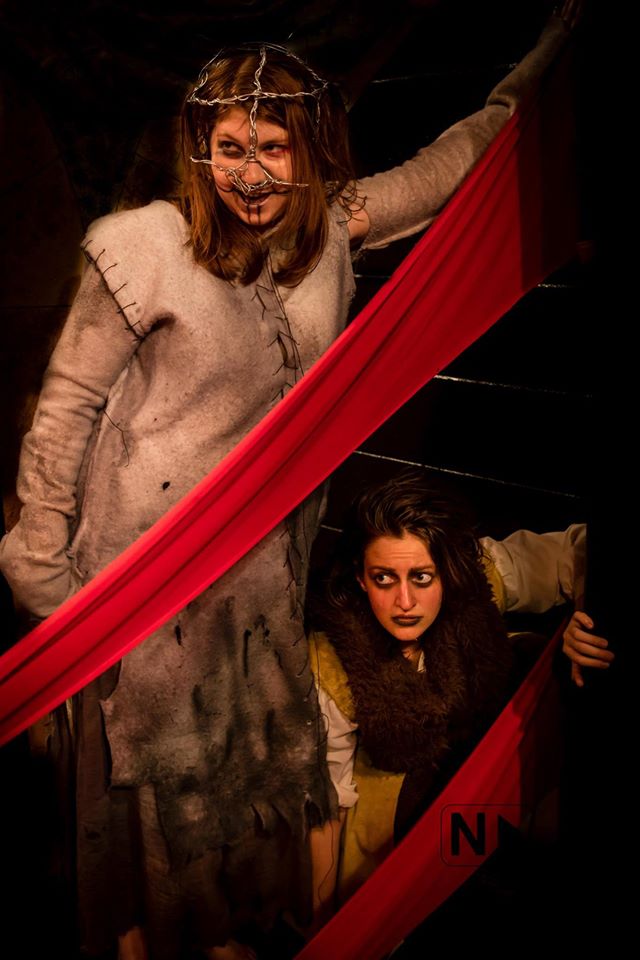
Katy Jenkins as The Witch and Kaelea Rovinsky as Helena Jo. Costumes by Delena Bradley, Lighting by Benjamin Dionysus. Photo by iNDie Grant Productions
Countess Bathory presents a cast thoroughly calcified in various caste positions, both by birth and by psychological manipulation. Nowhere is this more evident than in Helena Jo, Bathory’s “Bear” (played by Kaelea Rovinsky). Though ursine in appearance, even going so far as to describe herself as a bruin, Helena is loyal as a dog; she doesn’t even seem to have any concept of a world outside of servitude to the Countess. Every other servant has ambitions beyond their current status, or remembers a time when they were not so oppressed. Helena alone seems to exist solely in this world, even going so far as to reject the concept of escape.
Helena Jo is also unique in that she has an opportunity for promotion among the servants. At the play’s opening, Anna Darvolya is the senior servant: Helena Jo spends her time both currying Anna’s favor and abusing those beneath her. When Anna dies of an unspecified illness, Helena Jo seems to be in charge of running the house. She delivers messages for Bathory and either communicates with or serves as the porter. She’s clearly uncomfortable in this role, though, and the Countess is quick to let Helena know she is not great at her job.
Helena seems to be at the apex of her power in Act 3, Scene 2: harassing, commanding, and abusing three servants, presenting herself as the high priestess to a religion dedicated to Elizabeth Bathory. This dynamic vanishes, however, with the entrance of the Witch. Played by the same actor who portrays Anna Darvolya (Katy Jenkins, in this case), Erzi Majorova sweeps into the second-in-command position without so much as a by-your leave, leveraging her unique skills and obvious penchant for hucksterism to become Elizabeth’s confidant; at least in terms of the metaphysical. There is a noticeable parallel to Reagan’s psychic consultations (though presumably Reagan was not a fan of bathing in blood), and it remains unclear to the very end whether the Witch’s rites and rituals are having any effect at all, or if she is merely taking advantage of Bathory’s paranoia and delusions.
We see a markedly demure Helena Jo after this scene. There is no more abuse from her. She works in tandem with Jane (their newest acolyte), seemingly as an equal, and more than once warns Kate (the omega wolf) against endangering herself by angering the Countess. Act 4, Scene 2 seems to culminate in a choice for Helena: break away from a self-deifying abuser that has shown her virtually no sign of affection or appreciation, or double-down her cult-like loyalty in the hopes that, in the face of crisis, there will be some ultimate reward. “I am my Lady’s bear, then bite me, Dog / And prove the justice of a noble office.” Even after making her choice, she displays much of the confusion and guilt of an ambivalent apostate.
COUNTESS BATHORY is back Thursday – Saturday. Be sure to reserve your FREE seats now!
June 9 – 25
Thursdays, Fridays, and Saturdays at 7:30pm
4001 N Ravenswood Ave, Ste 405
ALL SEATS ARE FREE
